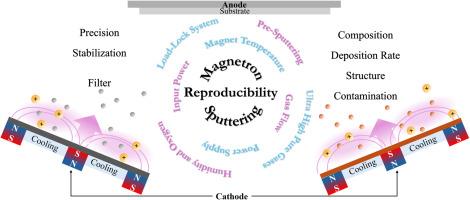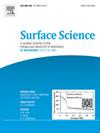磁控溅射共沉积ZrCu金属玻璃的再现性
IF 1.8
4区 化学
Q3 CHEMISTRY, PHYSICAL
引用次数: 0
摘要
本文利用Zr和Cu共沉积的三组金属玻璃样品,对磁控溅射技术的再现性进行了三年多的研究。由于金属玻璃或非晶薄膜对成分和结构的敏感性,其再现性尤为关键。分析了三组样品之间以及不同ZrxCu1-x和纯Zr和Cu成分样品之间的组成和沉积速率变化。利用能量色散光谱和电子能量损失光谱测定了其组成,并用原子力显微镜分析了沉积速率。利用电子对分布函数研究了三组样品和每组样品之间的结构变化。最后,利用电子对分布函数、能量损失谱和x射线光电子能谱分析了样品中的氧掺杂情况。对样品的分析表明,ZrCu合金溅射过程的再现性有待提高。提出了提高溅射技术再现性的改进措施。本文章由计算机程序翻译,如有差异,请以英文原文为准。

Reproducibility of magnetron-sputter co-deposited ZrCu metallic glasses
In this work, the reproducibility of the magnetron sputtering technique was studied for more than three years using three sets of metallic glass samples grown by co-deposition of Zr and Cu. The reproducibility of metallic glasses or amorphous thin films is particularly critical due to their sensitivity to composition and structure. The analysis was made considering composition and deposition rate variation among the three sets and among the samples with different compositions of ZrxCu1-x and pure Zr and Cu. The composition was measured using Energy Dispersive Spectroscopy and Electron Energy Loss Spectroscopy, and the deposition rate was analyzed by Atomic Force Microscopy. The electron Pair Distribution Function was used to study the structural variation among the three sets and the samples in each set. Finally, the oxygen incorporation in the samples was investigated by electron Pair Distribution Function, Energy Loss Spectroscopy, and X-ray Photoelectron Spectroscopy to understand the oxygen profile incorporation. The analysis of the sets of samples indicated that reproducibility should be improved in the sputtering process of ZrCu alloys. Some improvements to increase the reproducibility of the sputtering technique were suggested.
求助全文
通过发布文献求助,成功后即可免费获取论文全文。
去求助
来源期刊

Surface Science
化学-物理:凝聚态物理
CiteScore
3.30
自引率
5.30%
发文量
137
审稿时长
25 days
期刊介绍:
Surface Science is devoted to elucidating the fundamental aspects of chemistry and physics occurring at a wide range of surfaces and interfaces and to disseminating this knowledge fast. The journal welcomes a broad spectrum of topics, including but not limited to:
• model systems (e.g. in Ultra High Vacuum) under well-controlled reactive conditions
• nanoscale science and engineering, including manipulation of matter at the atomic/molecular scale and assembly phenomena
• reactivity of surfaces as related to various applied areas including heterogeneous catalysis, chemistry at electrified interfaces, and semiconductors functionalization
• phenomena at interfaces relevant to energy storage and conversion, and fuels production and utilization
• surface reactivity for environmental protection and pollution remediation
• interactions at surfaces of soft matter, including polymers and biomaterials.
Both experimental and theoretical work, including modeling, is within the scope of the journal. Work published in Surface Science reaches a wide readership, from chemistry and physics to biology and materials science and engineering, providing an excellent forum for cross-fertilization of ideas and broad dissemination of scientific discoveries.
 求助内容:
求助内容: 应助结果提醒方式:
应助结果提醒方式:


